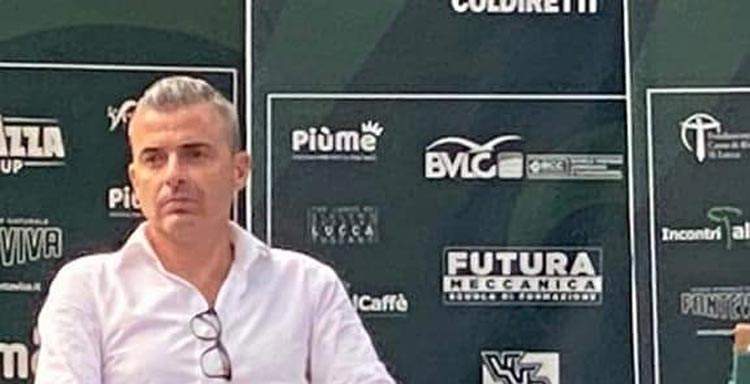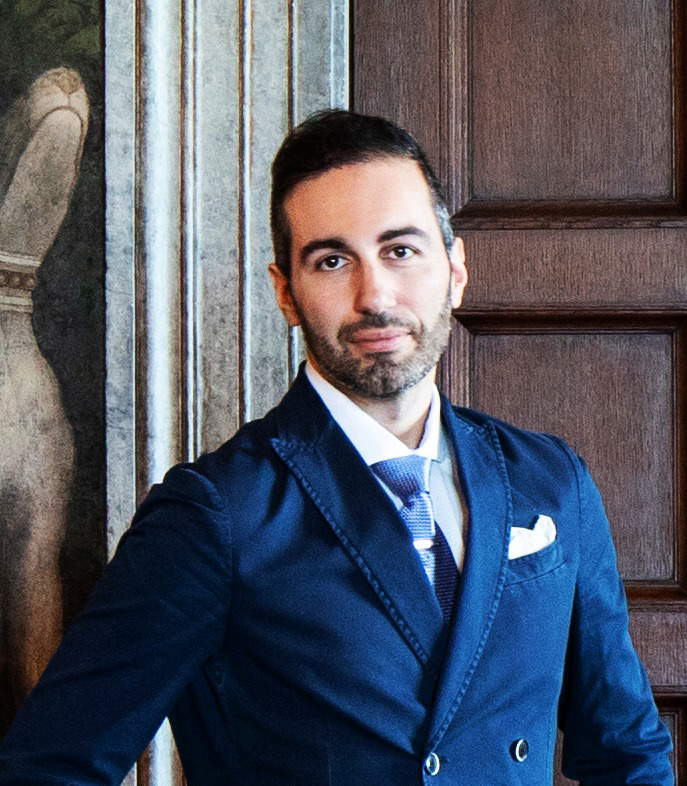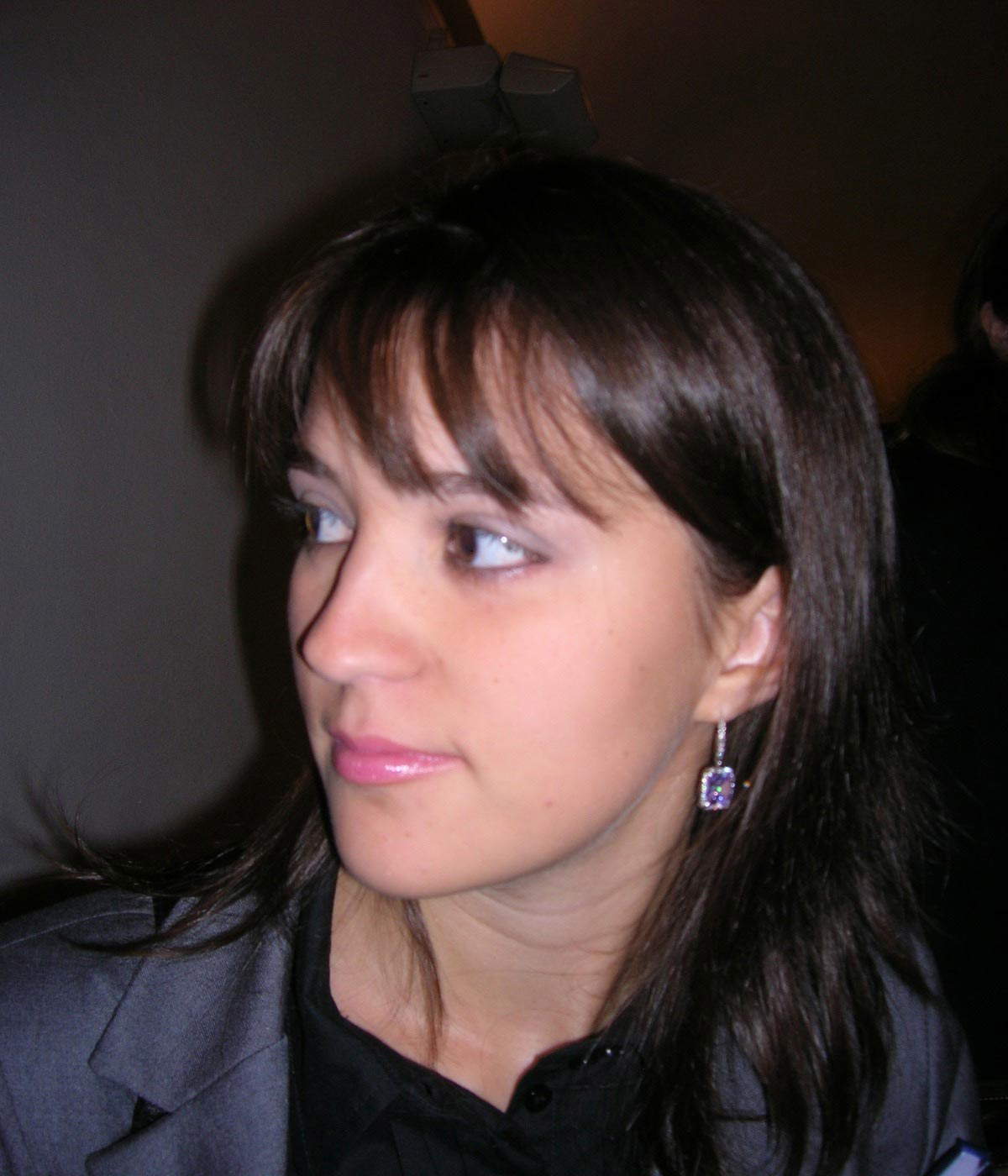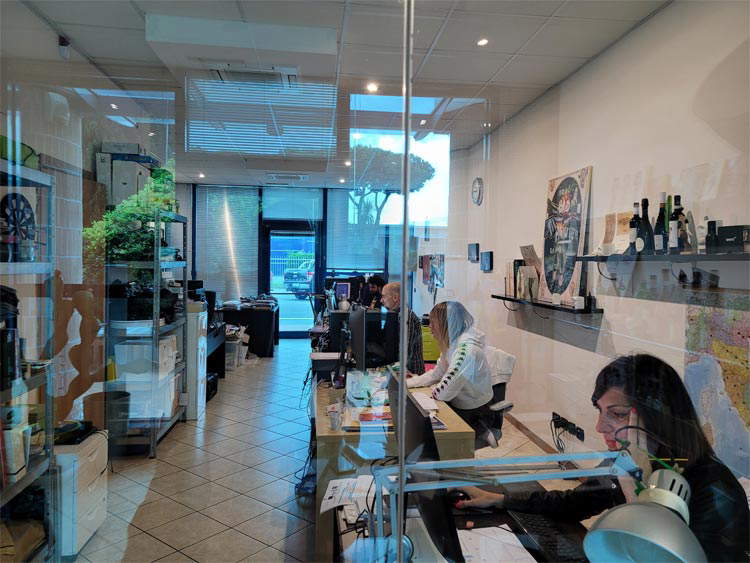Art Windows editor's interview with The Courier. We reveal the behind-the-scenes
This article, with the original title “Those artists who ended up on the Net,” by Chiara Dino, was published in Corriere Fiorentino on May 21, 2023.
They started from a blog, but don’t worry, it was not about remedies to love ills or aesthetic consultations or even less about narcissistic narratives of the self. No, they started from a blog dedicated to the popularization, high, of art. It was 2009 and in Massa in the offices of the Danae Project communication agency (from Klimt’s Danae?) was born the embryo of Finestre Sull’Arte, a registered newspaper in 2017, first only online and then also in a quarterly print version. An operation to facilitate knowledge of ancient and contemporary art events that is all Tuscan in head and billing but looks far beyond the borders of the Grand Duchy and has three people at the helm, Daniel Rocca, publisher, Federico Giannini, editor and Ilaria Baratta, editor-in-chief, assisted by five editors. A great little enterprise that started quietly and which we talk about now that it is strong in high numbers with Daniel Rocca.

Why, when and how was Finestre Sull’Arte born?
Finestre Sull’Arte was born in 2009 as an art historical popularization project to bring the young web audience closer to Art. The idea was by Federico Giannini who was 23 years old at the time and Ilaria Baratta who was 22. The project continued as a blog until 2017, when, thanks to a chance meeting with yours truly, Finestre Sull’Arte became a newspaper.
In the online newspaper, a part of the publications are the result of complex art-historical research, I am thinking, to stay with current events, of in-depth studies on Botticelli’s Birth of Venus and Caravaggio’s Bacchus; but then there is a whole other part of news that follows the agenda dictated by what is happening (exhibitions, regulations related to the Cultural Heritage Code, calls for proposals and job offers). How do you choose what needs to be put online and what reader are you targeting?
The plan and editorial line are the result of discussion, but the one who decides the topics and who to commission articles from is Giannini. The goal is to write about everything related to the art world, trying to maintain a high standard in both form and content. We want to speak to those who identify with our way of reporting on art; precise and comprehensive. We don’t chase the audience.
How many readers do you have?
In April we had 1.4 million reads with an average reading time of 8 minutes, which for the web is a good result, considering that our articles often exceed 20 thousand characters. We are also very popular on social media with 420 thousand followers on Fb and 85 thousand on Instagram. Finestre Sull’Arte reaches over 2 million users monthly.
Is the site accessed by subscription? How much do subscriptions affect revenues and how much advertising?
The content of the day is always free, we charge for browsing archival articles. Subscriptions affect about 30 percent of revenues compared to advertising .
In your experience with culture you eat, although the expression is ugly a lot?
With culture in the strict sense you eat but you do not get fat. There are some situations that should be regulated more carefully especially when the public uses the criterion of the highest price to award by tender the management of Heritage. Not to mention some harmful aspects of volunteerism that we have often written about. If, however, we broaden the concept of culture and think of Italian companies that export Made in Italy products to the world then yes, with culture we eat and eat well.
Do you think that the work you do on Finestre Sull’Arte is an antidote to over-tourism or on the contrary that it incentivizes it?
We definitely help create interest of the art cities we talk about. Tourism is an opportunity that if mismanaged, however, can jeopardize the integrity of our artistic and natural heritage as well as create discomfort for those who do not make a living from tourism.
Have you profiled your typical reader?
By age and social background I would say heterogeneous. They live in north central regions and 65 percent are women.
Do you update the site with news every day, every week or how often?
We publish 8 to 10 news items a day, every day, 365 days a year.
Your main competitor is Artribune, what do you think differentiates you from them?
They chose an English name for their name, we chose an Italian name.
Who writes in your newspaper? Apart from the editors do you have contributions from art historians, or specialists?
We have five editors and a large number of contributors scattered throughout Italy. They write and have written, critics, art historians, economists, sociologists, philosophers. Over the years, the likes of Antonio Paolucci, Hans Ulrich Obrist, Gigetta Dalli Regoli, Tiziano Scarpa, Beatrice Buscaroli have spoken on our journal.
How long have you started with the print edition?
With the print edition we started in March 2019, it is a 180-page paperback quarterly, which you can only buy online through our website. An operation that came about because we are romantics.
New projects?
We want to enhance the English edition of the website, which we started in February this year and will conclude with the translation of our entire archive of more than 20 thousand articles, and to market tourist packages to discover the beauties of Italy less known to the general public.



 |
| Art Windows editor's interview with The Courier. We reveal the behind-the-scenes |
Warning: the translation into English of the original Italian article was created using automatic tools. We undertake to review all articles, but we do not guarantee the total absence of inaccuracies in the translation due to the program. You can find the original by clicking on the ITA button. If you find any mistake,please contact us.




























